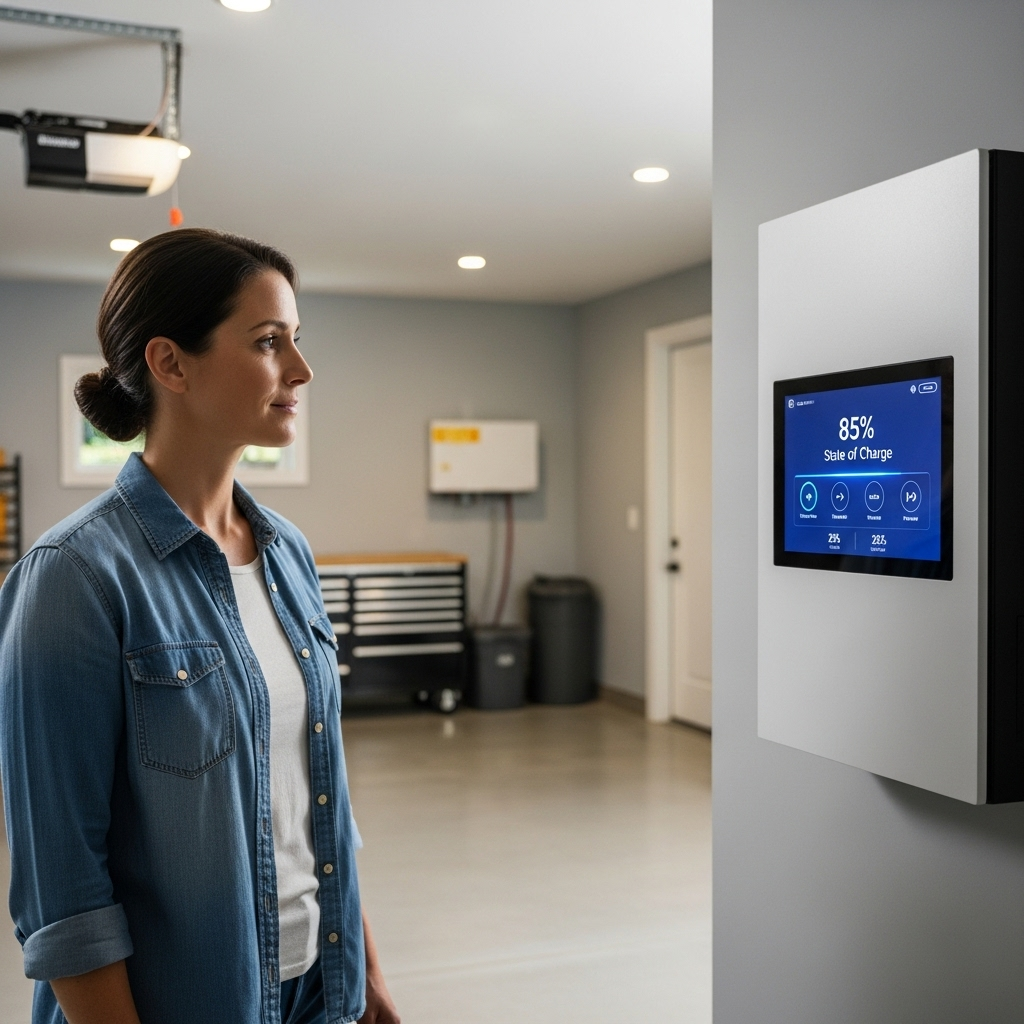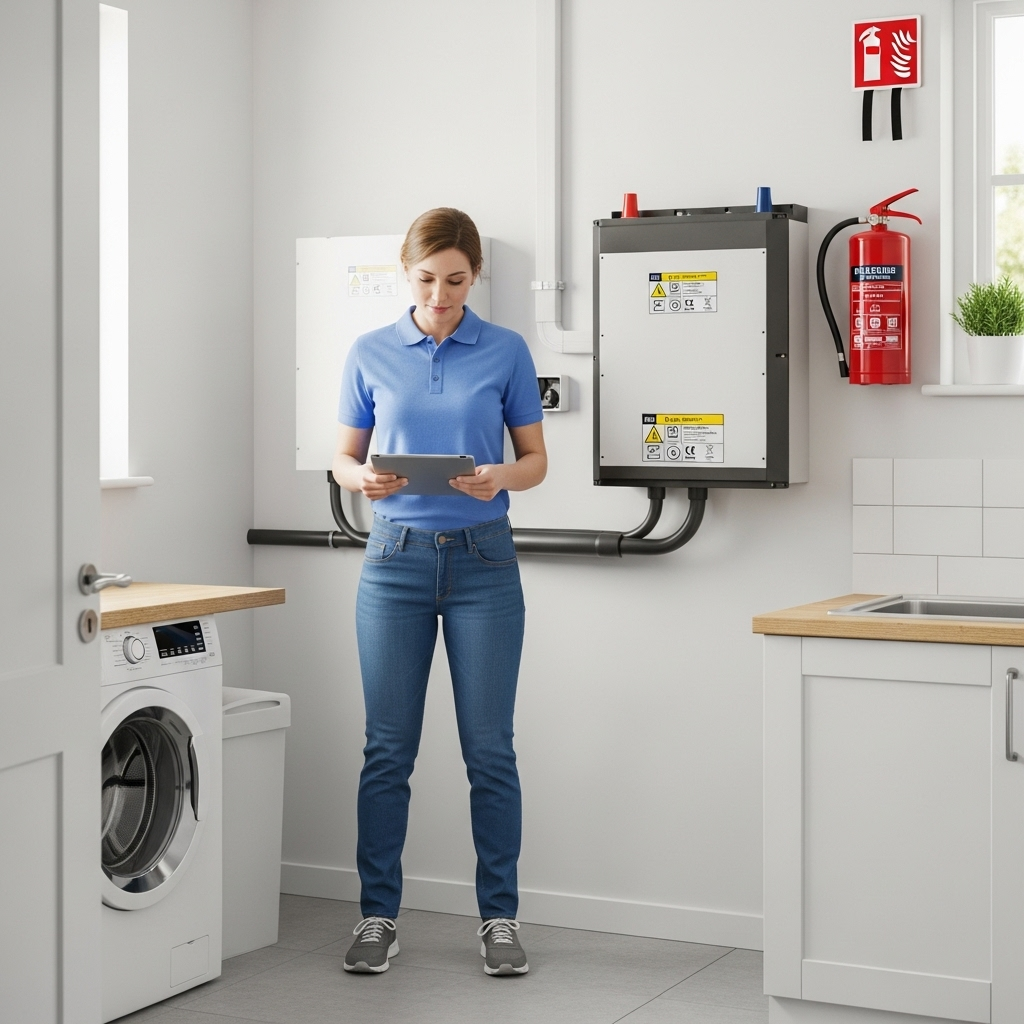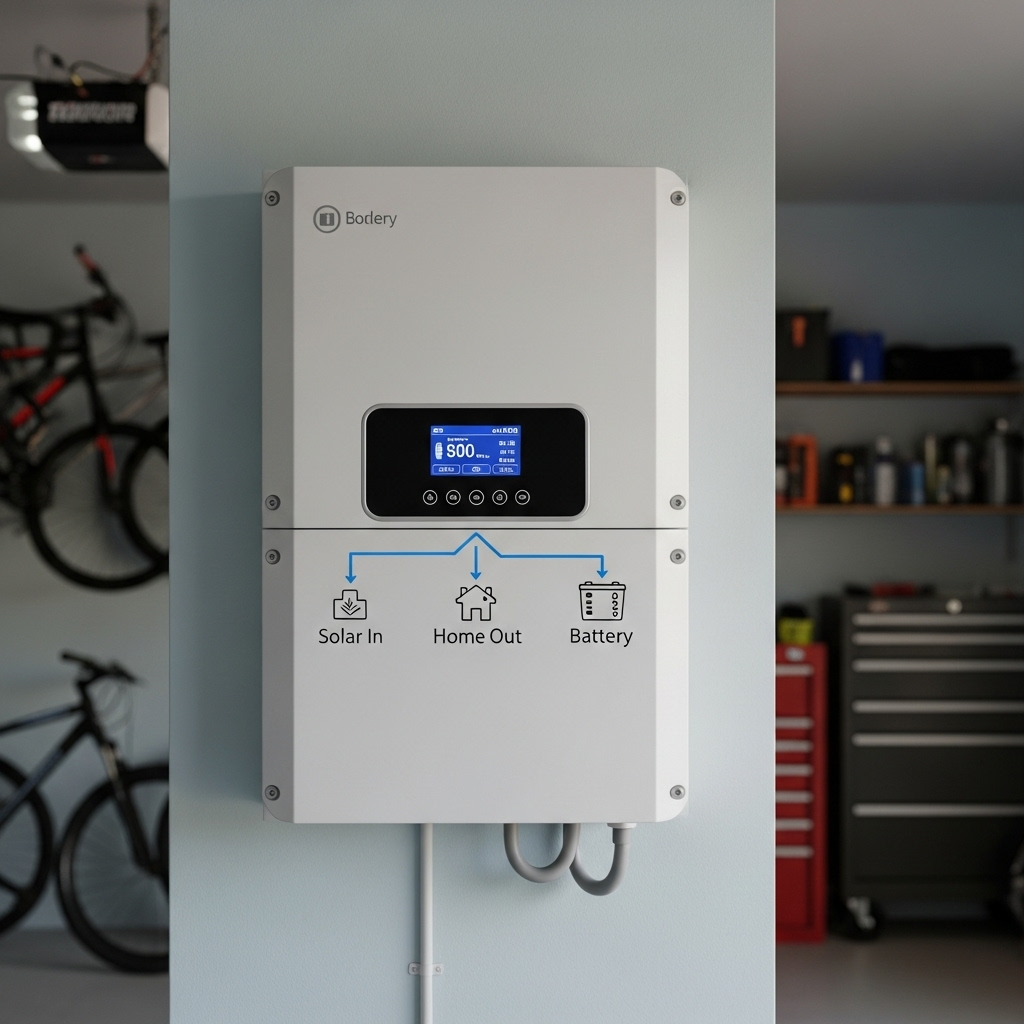A home energy storage system (ESS) is a significant step toward energy independence. To protect this investment, a consistent maintenance routine is crucial. The central question for many owners is about frequency: should you perform checks weekly or is quarterly enough? The optimal homeowner ESS check frequency isn't a one-size-fits-all answer. It depends on your system's technology, your local environment, and how you use your stored energy. Establishing the right cadence ensures your residential energy storage system operates safely and efficiently for years.
The Case for Weekly ESS Inspections: Early Detection and Peace of Mind
A weekly inspection is a quick, proactive measure that takes only a few minutes. Its primary purpose is to catch small issues before they escalate. Think of it as a brief health screening for your system. This high-frequency check provides confidence that your system is ready to perform, especially if you rely on it for critical loads.
What to Look for in a Quick Weekly Check
A weekly ESS inspection should be fast and straightforward. Focus on two main areas:
- Visual Inspection: Walk around your unit. Look for any signs of physical damage to the casing, check that all connections appear secure, and ensure vents are clear of obstructions. Also, be alert for any signs of pests that might chew on wiring.
- System Status Monitoring: Glance at your system’s physical display or open its monitoring app. Check for any active error codes or warnings. Note the current state of charge (SoC) and confirm it aligns with recent weather and your home's usage. Any sudden, unexplained drops could signal a problem.
Who Benefits Most from Weekly Checks?
A weekly maintenance schedule is particularly beneficial for certain users. If your system is located in a harsh environment—such as a coastal area with salt spray, a dusty rural setting, or a location with extreme temperature swings—more frequent checks are wise. Similarly, if your system experiences heavy daily cycling or you are a new owner trying to establish a performance baseline, a weekly check-in provides valuable data and oversight.
The Power of Quarterly ESS Maintenance: A Deeper System Health Assessment
While weekly checks are for immediate issues, quarterly maintenance is about long-term health and performance optimization. These deeper dives provide a comprehensive assessment of your system's condition, ensuring it continues to meet your energy needs efficiently. This is where you move from simple observation to proactive care.
Expanding Beyond the Visual: Key Quarterly Tasks
Your quarterly ESS maintenance involves more detailed tasks:
- Performance Data Analysis: Review your system's historical data. Look at trends in its efficiency, average depth of discharge (DoD), and overall energy throughput. Analyzing this data helps you understand your system’s real-world efficiency. For a deeper look into the key metrics that define your system's output, you can reference this ultimate reference on solar storage performance.
- Cleaning and Environmental Control: Power down the system according to manufacturer instructions. Carefully wipe down the exterior of the components to remove dust and debris. Confirm that ventilation pathways are completely clear. The area around the ESS should be free of flammable materials and clutter.
- Software and Firmware Updates: Technology constantly improves. Check your manufacturer’s portal or app for any available software or firmware updates. These updates can enhance performance, improve safety features, and ensure compatibility with grid standards, which as the Grid Codes for Renewable Powered Systems report by IRENA explains, are vital for grid stability.
When a Quarterly Schedule is Sufficient
For many modern systems, a quarterly maintenance schedule is perfectly adequate. This is often the case for residential energy storage systems installed in stable, climate-controlled environments like a garage or basement. High-quality LiFePO4 systems equipped with an advanced Battery Management System (BMS) perform continuous self-monitoring, reducing the need for constant user intervention. If your energy usage is consistent and moderate, a thorough quarterly check will likely cover all your needs.
Balancing the Schedule: Creating a Hybrid Maintenance Routine
Instead of choosing between weekly and quarterly, the most effective approach is often a hybrid model. This strategy combines the quick, observational nature of weekly checks with the in-depth analysis of quarterly maintenance. This balanced routine provides comprehensive oversight without becoming a burden.
Combining Weekly and Quarterly Tasks for Optimal Results
A hybrid routine offers the best of both approaches. The 5-minute weekly check ensures immediate safety and operational status, while the more involved 30-minute quarterly inspection handles deep cleaning, software updates, and performance analysis. This tiered approach catches problems early and supports long-term system vitality.
| Task | Weekly Cadence | Quarterly Cadence |
|---|---|---|
| Visual Inspection (damage, pests, loose wires) | ✔ | ✔ |
| Check Monitoring App for Errors/Alerts | ✔ | ✔ |
| Confirm Vents are Unobstructed | ✔ | ✔ |
| Wipe Down Components (powered off) | ✔ | |
| Review Historical Performance Data | ✔ | |
| Check for Software/Firmware Updates | ✔ | |
| Inspect Surrounding Area for Hazards | ✔ | ✔ |
The Role of Automated Monitoring
Modern systems feature sophisticated Energy Management Systems (EMS). An EMS automates much of the daily monitoring, tracking performance and issuing alerts for anomalies. As the International Energy Agency notes in its System Integration of Renewables report, these systems are key to managing distributed energy resources. While this automation is powerful, it does not eliminate the need for physical inspections. An app cannot see a frayed wire or a wasp nest building in a vent. Physical checks remain a vital part of any complete maintenance plan.
Final Thoughts on Your ESS Maintenance Cadence
Ultimately, the right maintenance schedule for your home ESS is one you can stick with consistently. Weekly checks are your first line of defense, ideal for spotting immediate physical or operational issues. Quarterly maintenance provides the deep, analytical review necessary for long-term health and efficiency. By combining these frequencies, you create a robust maintenance routine tailored to your specific system and environment. This proactive approach is the best way to ensure your system provides reliable, clean energy, securing your path to energy independence for the long haul.
Frequently Asked Questions
Can I over-maintain my home ESS?
While you cannot necessarily 'over-maintain' your system, performing deep, time-consuming checks too frequently is inefficient. The goal is to be consistent with a smart schedule that balances thoroughness with practicality. Stick to a routine of quick weekly observations and detailed quarterly inspections for the best results.
What happens if I skip maintenance checks?
Skipping regular checks allows small problems to go undetected. A loose connection, a blocked vent, or a persistent software bug can degrade performance, reduce the system's lifespan, and potentially create safety hazards. Consistent maintenance also helps ensure you remain in compliance with your manufacturer's warranty terms.
Does the type of battery (e.g., LiFePO4) change the maintenance frequency?
Yes, to an extent. Modern battery chemistries like Lithium Iron Phosphate (LiFePO4) are very stable and are managed by advanced electronics, requiring less hands-on care than older battery types. However, an ESS is more than just batteries. The inverter, wiring, and ventilation components all require regular physical inspection, making a hybrid weekly and quarterly schedule valuable for any type of residential energy storage system.





Leave a comment
All comments are moderated before being published.
This site is protected by hCaptcha and the hCaptcha Privacy Policy and Terms of Service apply.